Difference between revisions of "Feather Parameter"
m (→Fall Off) |
m (arrange the example images in a table, so they can all be seen at once) |
||
| Line 1: | Line 1: | ||
| − | ==About Feather | + | ==About the Feather Concept== |
| − | Feather is a float value in points (or whatever unit you have defined in File > Setup > Misc > Unit System) that | + | Feather is a float value in points (or whatever unit you have defined in File > Setup > Misc > Unit System) that represents the width of the area that is going to be dissolved at the edge. Feather is the ''light horny waterproof structure forming the external covering of birds''. See [http://www.wordreference.com/definition/feather English Feather definition]. |
| − | + | The Feather parameter is an standard parameter for the following types of layers: | |
| − | Feather | + | |
* [[Outline Layer]] | * [[Outline Layer]] | ||
| Line 12: | Line 11: | ||
* [[Star Layer]] | * [[Star Layer]] | ||
| − | Strangely [[Rectangle Layer]] doesn't have the Feather | + | Strangely [[Rectangle Layer]] doesn't have the Feather parameter. |
When you apply a Feather to any of those layers, then the edge of the shape becomes dissolved and spread out and shrunk the amount that the Feather value indicates. | When you apply a Feather to any of those layers, then the edge of the shape becomes dissolved and spread out and shrunk the amount that the Feather value indicates. | ||
| Line 21: | Line 20: | ||
|} | |} | ||
| − | == Feather's | + | == Feather's Complementary Parameters == |
| − | There is | + | There is another parameter that works together with the Feather parameter, and which specifies the type of feathering to be used. On Circle layers the parameter is called ''Fall Off'' and for the other featherable layers it is called ''Type of Feather''. |
=== Type of Feather=== | === Type of Feather=== | ||
| − | This complementary parameter can be set | + | This complementary parameter can be set in [[Outline Layer]], [[Region Layer]], [[Polygon Layer]] and [[Star Layer]]. All the example images below have the same amount of Feather (set to 20 points). |
| − | + | {| | |
| − | [[Image:Star Feather Fast Gaussian Blur.png]] | + | | [[Image:Star Feather Fast Gaussian Blur.png]] |
| − | + | | [[Image:Star Feather Gaussian Blur.png]] | |
| − | [[Image:Star Feather Gaussian Blur.png]] | + | | [[Image:Star Feather Disc Blur.png]] |
| − | + | |- | |
| − | [[Image:Star Feather Disc Blur.png]] | + | | Fast Gaussian Blur |
| − | + | | Gaussian Blur | |
| − | [[Image:Star Feather Box Blur.png]] | + | | Disc Blur |
| − | + | |- | |
| − | [[Image:Star Feather Cross-Hatch Blur.png]] | + | | [[Image:Star Feather Box Blur.png]] |
| − | + | | [[Image:Star Feather Cross-Hatch Blur.png]] | |
| − | + | |- | |
| + | | Box Blur | ||
| + | | Cross-Hatch Blur | ||
| + | |} | ||
===Fall Off === | ===Fall Off === | ||
| − | That's the type of feather for the [[Circle Layer]]. All the | + | That's the type of feather for the [[Circle Layer]]. All the example images below have the same amount of Feather (set to 20 points). |
| − | + | {| | |
| − | [[Image:Circle Feather 20.png]] | + | | [[Image:Circle Feather 20.png]] |
| − | + | | [[Image:Circle Feather Square.png]] | |
| − | [[Image:Circle Feather Square.png]] | + | | [[Image:Circle Feather Linear.png]] |
| − | + | |- | |
| − | [[Image:Circle Feather Linear.png]] | + | | Square Root |
| − | + | | Square | |
| − | [[Image:Circle Feather Sigmond.png]] | + | | Linear |
| − | + | |- | |
| − | [[Image:Circle Feather Cosine.png]] | + | | [[Image:Circle Feather Sigmond.png]] |
| + | | [[Image:Circle Feather Cosine.png]] | ||
| + | |- | ||
| + | | Sigmond | ||
| + | | Cosine | ||
| + | |} | ||
Revision as of 22:12, 14 September 2007
Contents
About the Feather Concept
Feather is a float value in points (or whatever unit you have defined in File > Setup > Misc > Unit System) that represents the width of the area that is going to be dissolved at the edge. Feather is the light horny waterproof structure forming the external covering of birds. See English Feather definition.
The Feather parameter is an standard parameter for the following types of layers:
Strangely Rectangle Layer doesn't have the Feather parameter.
When you apply a Feather to any of those layers, then the edge of the shape becomes dissolved and spread out and shrunk the amount that the Feather value indicates.
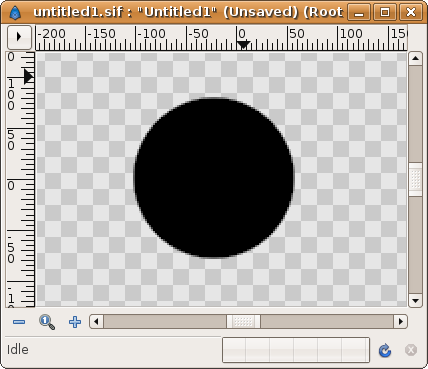 |
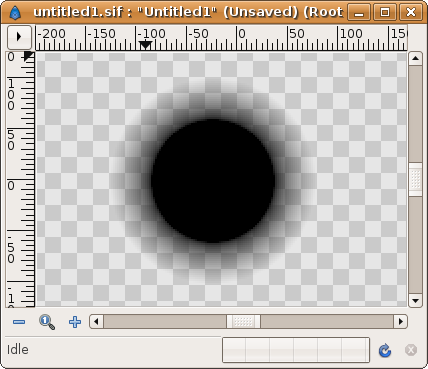
|
| Circle with Feather set to 0 points | Circle with Feather set to 20 points |
Feather's Complementary Parameters
There is another parameter that works together with the Feather parameter, and which specifies the type of feathering to be used. On Circle layers the parameter is called Fall Off and for the other featherable layers it is called Type of Feather.
Type of Feather
This complementary parameter can be set in Outline Layer, Region Layer, Polygon Layer and Star Layer. All the example images below have the same amount of Feather (set to 20 points).
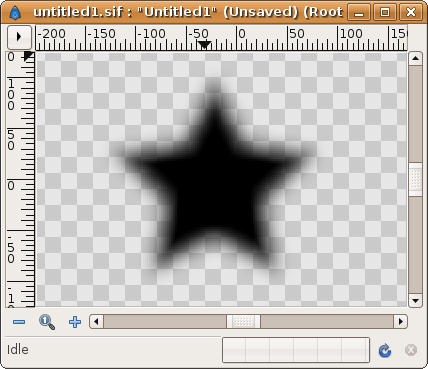
|

|
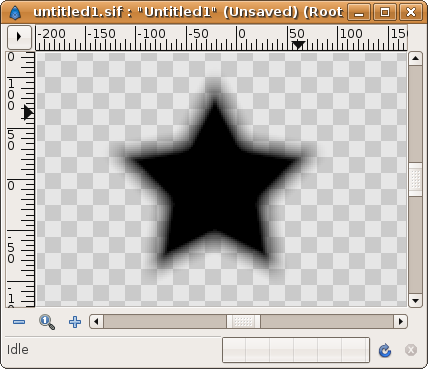
|
| Fast Gaussian Blur | Gaussian Blur | Disc Blur |
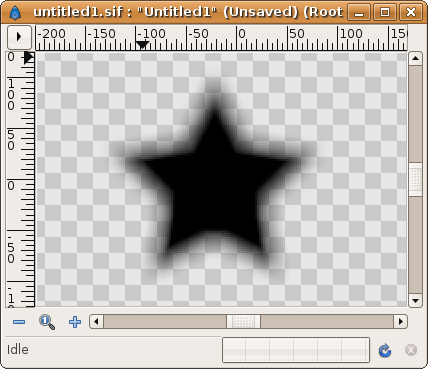
|
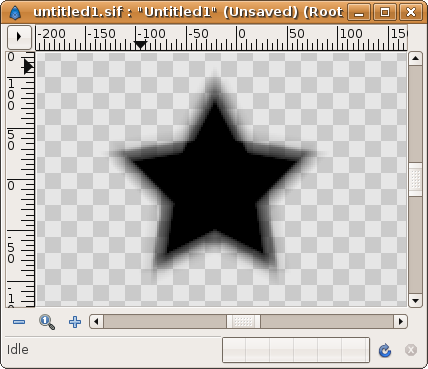
| |
| Box Blur | Cross-Hatch Blur |
Fall Off
That's the type of feather for the Circle Layer. All the example images below have the same amount of Feather (set to 20 points).

|
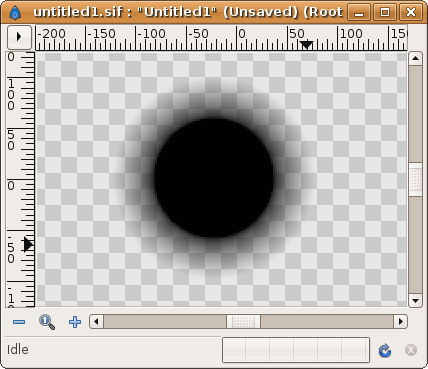
|
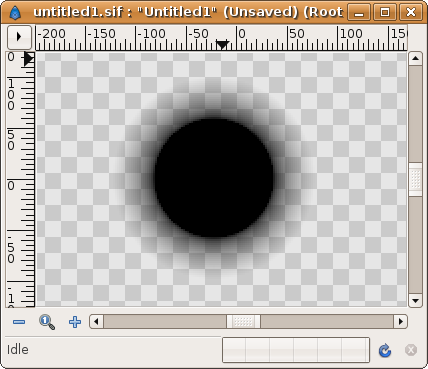
|
| Square Root | Square | Linear |
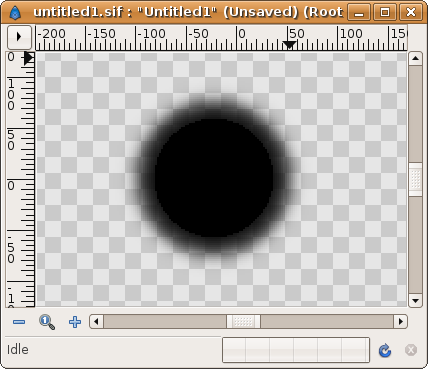
|
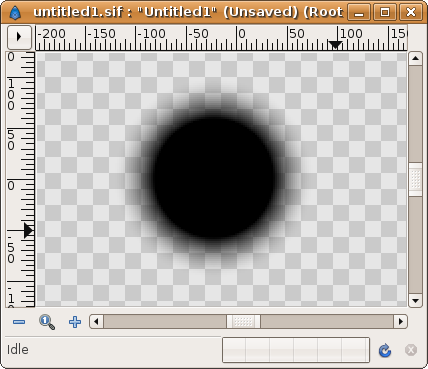
| |
| Sigmond | Cosine |
| Language: |
English |